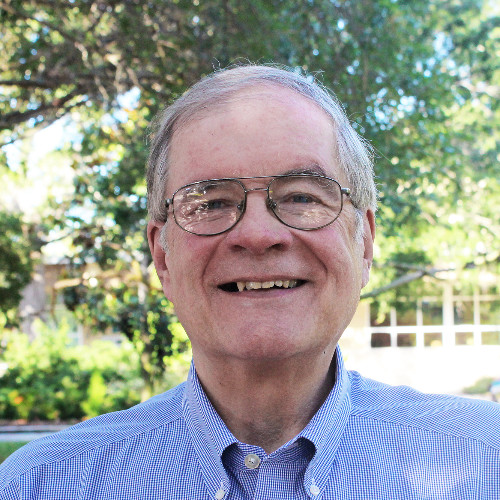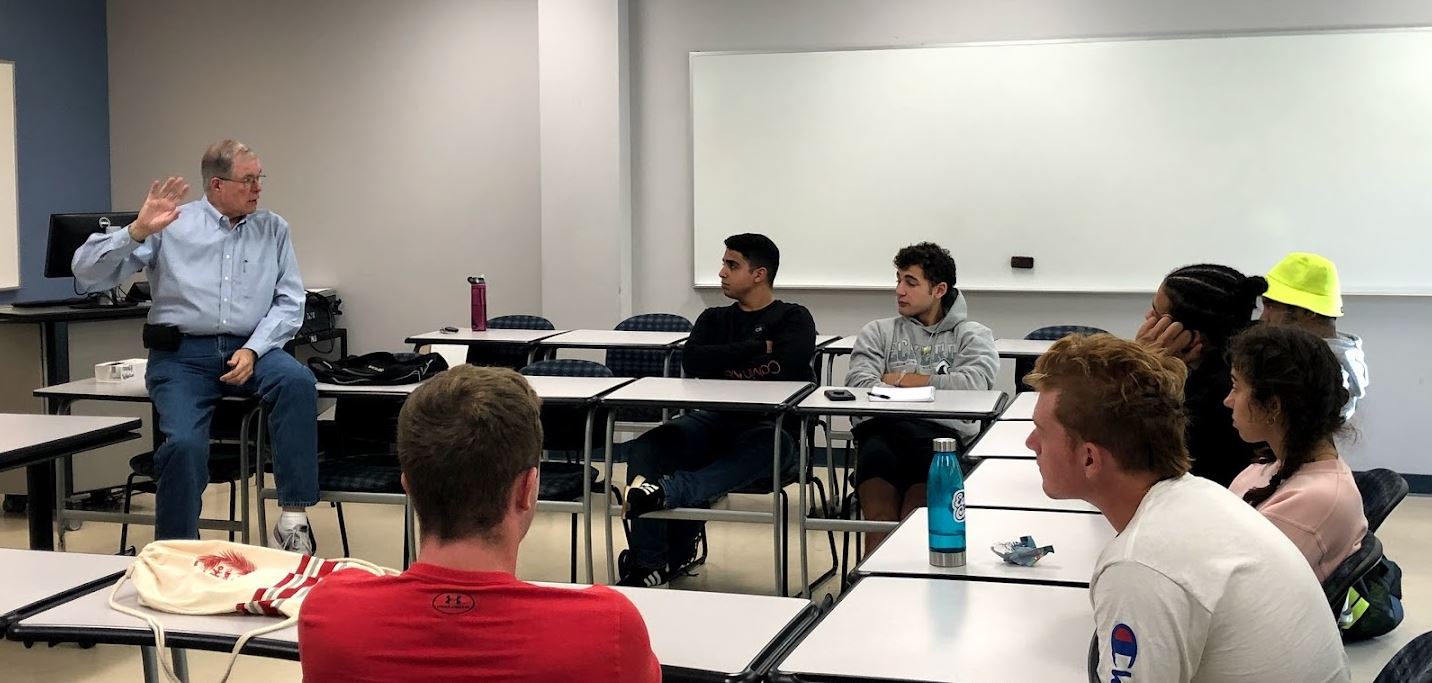Cultivating an Entrepreneurial Mindset in the College Classroom
By EMP Staff
As an Entrepreneurial Mindset Profile® (EMP) Certified Practitioner and Professor of Management at Eckerd College, Frank Hamilton weaves the EMP throughout his introductory course on the entrepreneurial mindset.
We recently sat down with Frank to discuss how he incorporates both the EMP and the Ice House curriculum with his students.
EMP: Hi Frank! Let’s talk about the Cultivating an Entrepreneurial Mindset course you (and other professors at Eckerd) teach here on campus. You’ve mentioned that although a large part of the curriculum is based on the Ice House Entrepreneurship Program developed by the Entrepreneurial Learning Initiative (ELI), you start the course with the students taking the EMP and then weave those EMP concepts throughout the entire semester. Tell us more.
Hamilton: Yes, that’s right. In the very first class, I focus on the entrepreneurial mindset and give an overview of the EMP, but I purposely don’t emphasize the scales or even give the definitions of the scales until later. That way, when the students actually take the instrument before our second class, they are going in fresh and don’t have any preconceived notions of what the scales indicate. I don’t want to influence them too much on their responses. I tell them this is a mindset course, and I want them to expand their current mindset and concentrate on what the entrepreneurial mindset is.
EMP: In the second class, have the students already received their EMP Feedback Reports ahead of time, or do you hold their reports?
Hamilton: I’ve done it both ways, but I prefer to walk them through a sample report and explain different aspects of the report before they get their own profiles.
EMP: So once the students have looked at their reports, what is your process?
Hamilton: Well, it depends on how large the class is. With smaller classes, I just sit down in a circle with them and use some of the questions that are included in the EMP Practitioner Manual to get them talking about their results:
- What about your results pleased you?
- What if anything concerned you?
- What if anything surprised you?
- What results seemed the most or least accurate to you and why?
With larger classes, I divide them into smaller groups, and then we meet back up with the class as a whole to discuss the highlights. I want them to walk away thinking, “Okay, this is where I currently am at this point in time, and now I need to think about where I want to go with this information.”
EMP: What’s an example of how those conversations lead into a larger discussion?
Hamilton: Let’s take Risk Acceptance. We talk about what does risk really mean to an entrepreneur? To a college student? Some students score lower on Risk Acceptance because they haven’t really had the life experiences or opportunities yet to understand it, so they might be a little more risk-averse. I use myself as an example and let them know that by the time I first took the EMP, I had already had two careers behind me with many successes and failures and lots of opportunities to take risks. In other words, I explain that you have to look at the scales and their results not only in relation to their educational journeys but also their lives in general.
EMP: How do you use the EMP Development Guide?
Hamilton: I ask them “How do you see yourself progressing over the next few months? Pick two or three things you want to work on, either a development area or perhaps a strength that you want to capitalize on.” Before they dig into the EMP Development Guide and Action Planning sheets, though, I do an overview of goal setting practices and work with them on how to create SMART (Specific, Measurable, Attainable, Relevant and Timely) goals because I found that their first attempts are something like, “I want to hit the moon!” and I say, “That’s great, but you’re going to have to be a little more specific.” They turn in their Action Plans, and I review them to make sure they’re well-thought out and complete. Throughout the rest of the course, they are relating their goals to the rest of the curriculum.
EMP: A big part of your curriculum is the Ice House program. How do you weave in the EMP scales with those modules?
Hamilton: The Ice House program is an experiential, problem-based program that has eight different modules including the Power of Choice, Recognizing Opportunity, Ideas into Action, Pursuit of Knowledge, Creating Wealth, Building Your Brand, Creating Community and the Power of Persistence. Although only two of these directly link up with the EMP (Action Orientation and Persistence), all of them refer to different aspects of the EMP scales, and there are parallels to the tips in the EMP Development Guide as well. For example, the first two modules, Power of Choice and Recognizing Opportunity, have huge connections to the Risk Acceptance and Future Focus scales. The students can look at their scores on those two dimensions and see how they might affect their own choices or how they view problems as opportunities. And if those are scales they’re working on improving, they can “stretch” themselves during the class assignments and discussions around those topics. One of the goals of the Ice House program is to “establish and develop entrepreneurial attitudes, behaviors, and skills,”* so the EMP is the perfect complement to that.
EMP: You also have the students take the EMP a second time at the end of the semester, correct?
Hamilton: Yes! The assignment is:
- A reflection on the results (T1-T2).
- Report on both sets of scores.
- Have the results changed on any dimension(s)?
- To what do you attribute these changes?
In addition to them comparing and contrasting their scores on the two administrations, they reflect on if and how they improved over the course of the semester. We also look at the class as a whole through an EMP Group Report which is always very interesting to see where they’ve moved the needle as a group.
EMP: What other activities do you do throughout the semester to help students leverage their strengths?
Hamilton: We do a lot of small-group discussions where students who are working on the same scales get together to share ideas and actions they’ve taken to improve. I also invite actual entrepreneurs from the community (sometimes Eckerd graduates) to come into the classroom and share their background and experiences as entrepreneurs. I ask the students afterwards about what scales they heard the person use during the course of their career. I also am wanting to have the entrepreneurs actually take the EMP so they could discuss directly with my students how the scales have come into play in their professions. I think it would be great for students to see working entrepreneurs who maybe scored a little lower on some of the scales but are still highly successful.
EMP: Thanks so much, Frank, for sharing your expertise with us. We appreciate your insights and wish you all the best!
*IHEP Original Course Description

Frank Hamilton is a Professor of Management at Eckerd College and can be reached at [email protected].

The Entrepreneurial Mindset Profile® (EMP) [emindsetprofile.com] is an excellent way to get an in-depth view of the entrepreneurial mindset and see how your personality traits and skill sets compare to those of corporate managers and entrepreneurs. Available online, the EMP provides scores on 14 different scales including Risk Acceptance, Passion, Need to Achieve, Future Focus, Idea Generation and Persistence among others. The EMP Feedback Report comes with a debrief video and a comprehensive Development Guide for continuous improvement.
Want to learn more about EMP Certification and how you can use it in your organization? Email us at [email protected] or visit the Certification page of the EMP website to see how you can start using the EMP with your clients and students.


